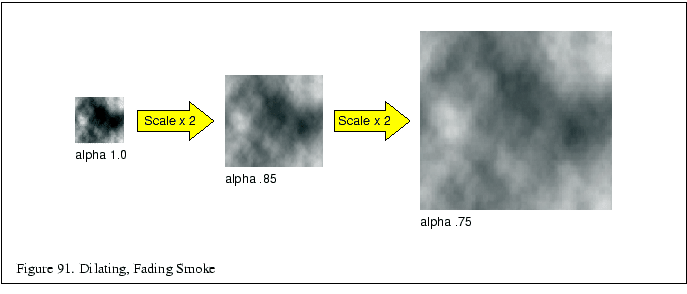
Modeling smoke potentially requires some sophisticated physics, but surprisingly realistic images can be generated using fairly simple techniques. One such technique involves capturing a 2D cross section or image of a puff of smoke with both luminance and alpha channels for the image. The image can then be texture mapped onto a quadrilateral and blended into the scene. The billboard techniques outlined in Section 6.10 can be used to ensure that the image is transformed to face the user. Using a GL_ MODULATE texture environment, the color and alpha value of the quadrilateral can be used to control the color and transparency of the smoke in order to simulate different types of smoke. For example, smoke from an oil fire would be dark and opaque, whereas steam from a flare stack would be much lighter in color.
The size, position, orientation, and opacity of the quadrilateral can be varied as a function of time to simulate the puff of smoke enlarging, drifting and dissipating over time.

More realistic effects can be achieved using volumetric techniques. Instead of a 2D image, a 3D volumetric image of smoke is rendered using the algorithms described in Section 16.2. Again, dynamics can be simulated by varying the position, size and transparency of the volume. More complex dynamics can be simulated by applying local distortions or deformations to the texture coordinates of the volume lattice rather than simply applying uniform transformations. The volumetric shading technique described in Section 16.2.11 can be used to illuminate the smoke.
There are many procedural techniques which can be used to synthesize both 2D and 3D textures [28].